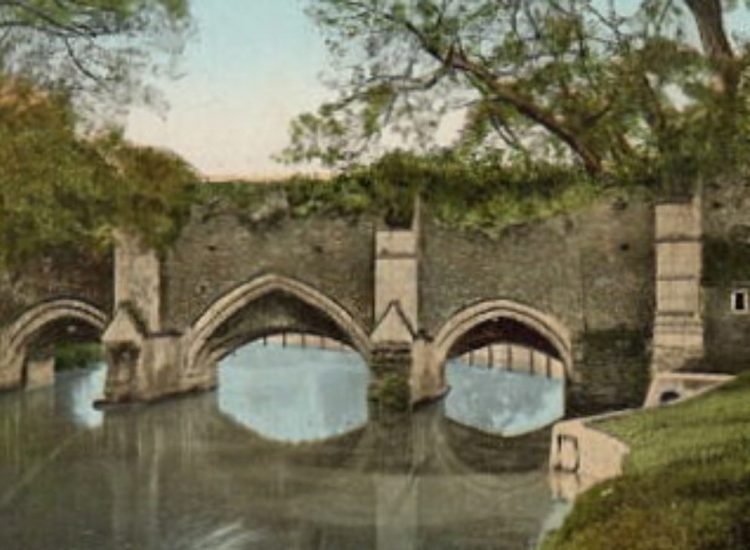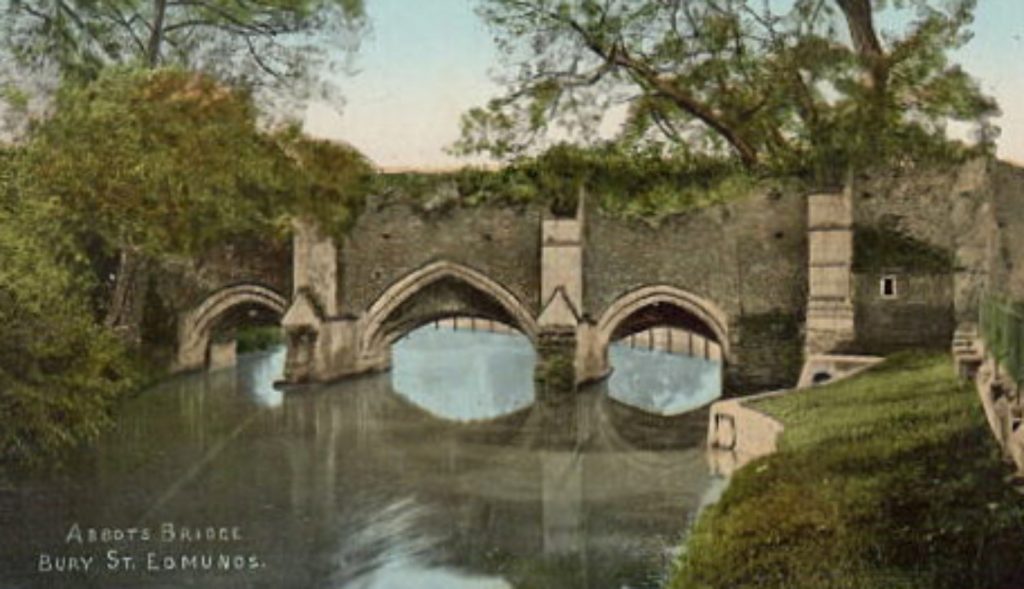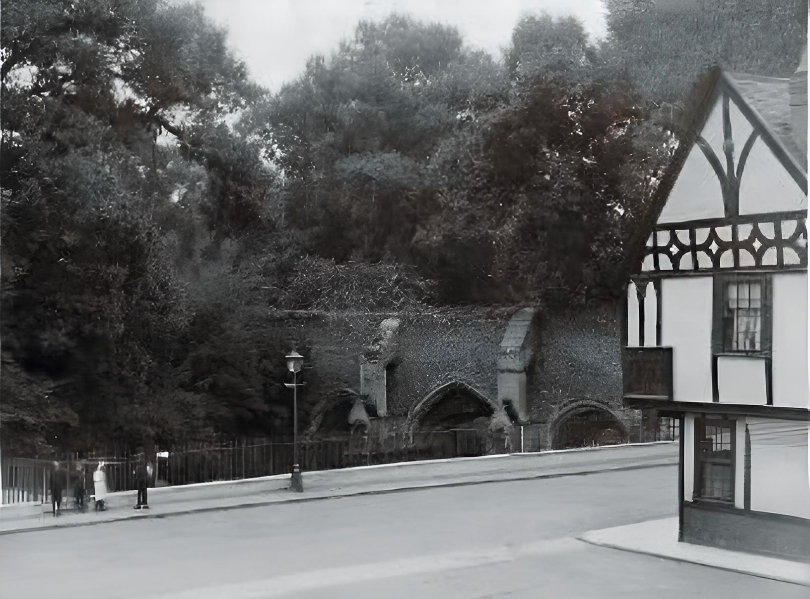
3rd September 2024
The Abbot’s Bridge
By Martyn Taylor for the Bury Free Press, August 2024
The building of the Church of St Edmund commenced in 1081; it was completed in 1210. Apart from the chalk mined locally to make the lime mortar and the flint, a by-product of the mining used to create the core of the buildings, the main building blocks (ashlar) were an Oolitic limestone from Barnack on the Cambridgeshire /Lincolnshire border. Here it was quarried, taken across the undrained fens on shallow draught barges into the River Great Ouse then via its tributary the River Lark into Bury St Edmunds.

This was probably the reason why the Abbot’s Bridge was built so much later, from 1215, as it made no sense to unload the Barnack Stone some way from the site, the bridge would have prevented this.
Circa 1211, the land on the east side of the River Lark came to used as the Vinefields. Winemaking in monasteries important for rituals, rites and services conducted, as they were in Bury, by Benedictine monks. This site for growing grapes on a definite incline from Eastgate Street is northwest facing, the must have been blest as normally vines face south to take advantage of a sunny disposition. Maybe the climate was warmer back in those times?
The bridge gave immediate access to these Vinefields by the townspeople via planks through the bridge’s open flying buttresses. On the Abbey side, the monks could cross uninhibited, an iron grating or portcullis being lowered, if necessary, to prevent any unwanted visitors on the river.
Two 14th century triangular ‘breakwaters’ on the bridge, Abbey side, slows the flow of the river, still very important when the river is in flood. Amazingly the River Linnet once joined the River Lark near this bridge as the Linnet was diverted to create a mill pond for the water mill.
Nearby, an open chimney flue on the Mustow Street side is all that remains of the Eastgate. One of the town’ s five gates pulled down in the 1760’s to allow more freedom for traffic. Nearby is a “cell” where the keeper of the Eastgate resided at different times. This was the only town gate controlled by the abbot up to the dissolution in 1539, handy in times of trouble, after all, waterways were the highways of England back then!

Mid 19th century the Rev Sir Thomas Gery Cullum tried to reinstate the Lark Navigation from Prickwillow to Bury St Edmunds in effect part recreating the very process which brought the Barnack Stone to the Abbey. Unfortunately for him the Borough Corporation prevented him from doing so, stopping coal laden barges at St Saviours wharf just off Fornham Road, the section of the Lark here known by locals as “the Coal River”. A protracted legal battle with the corporation over this, the coming of the railways in 1846 to the town and his death in 1855 ended any hope of the navigation going any further.
However, the Marquis of Bristol and his son Lord Francis Hervey tried to resurrect the scheme in 1889 by purchasing the Lark Navigation for the princely sum of £28.
Despite involvement with other interested parties the Lark Navigation died a death by 1915.
Currently, Eastgate Bridge built by William Steggles & Son in 1840 crosses the Lark, this superseded a ford and somewhat structurally challenged bridges as shown in a print by Richard Godfrey in 1779.

Similar articles
24th April 2025
Town Council pledges to Abbey of St Edmund, Reborn
The Bury St Edmunds Town Council has pledged £50,000 to the Abbey…
3rd February 2025
New Panels for Abbey of St Edmund 1000 Murals
The team behind the Abbey 1000 celebrations which took place in 2022,…
3rd January 2025
Conservation work on the Abbey begins
View all news
